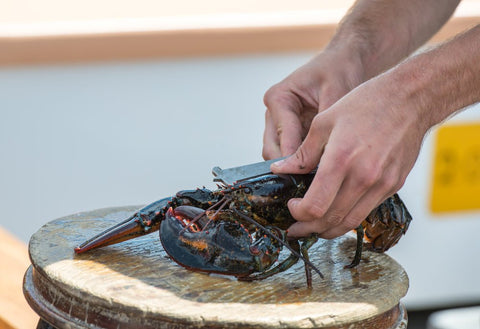Lobster fishing is a cornerstone of Maine’s economy and culture, and managing this valuable resource has always required careful regulation to ensure sustainability. Recently, a decision was made by regulators to delay the implementation of a new rule that would increase the minimum size of lobsters that can be legally harvested. Originally set to take effect sooner, the increase has now been pushed to July 2024, giving fishermen more time to adjust to the forthcoming changes.
In this blog, we’ll explore what this delay means for the Maine lobster industry, the importance of size limits in lobster conservation, and how this regulation affects the livelihoods of Maine’s lobstermen and the sustainability of lobster populations.
The Importance of Size Regulations in Lobster Fishing
Size regulations are critical for maintaining a healthy lobster population. The goal of increasing the minimum lobster size is to allow more time for lobsters to mature, reproduce, and contribute to the future of the species before they are harvested. Larger lobsters are vital to the ecosystem as they produce more offspring, helping to ensure that populations remain strong and can withstand environmental changes or fishing pressures.
By increasing the minimum size, regulators aim to protect juvenile lobsters and ensure that enough breeding-age lobsters remain in the water to sustain future generations. This kind of proactive management is essential for the long-term sustainability of the Maine lobster fishery, which is not only a significant source of revenue for the state but also a critical part of its identity.
Why the Delay Until July 2024?
The delay in the implementation of the new minimum size rule is partly a response to concerns from the fishing community. Many lobstermen expressed worry that the timing of the change could disrupt their operations, particularly during a challenging economic period. By pushing the start date to July, regulators are giving fishermen additional time to adjust to the new requirements without sudden interruptions to their livelihoods.
The Maine lobster industry has already faced a number of challenges in recent years, including the economic impacts of the COVID-19 pandemic, fluctuating market demand, and increasing costs of operation. In addition, regulatory pressures related to whale protection and climate change have placed additional burdens on fishermen. The delay provides a window of flexibility, allowing lobstermen to plan for the changes while still meeting the demands of the current fishing season.
Economic Impact on Lobstermen
Lobstermen are understandably concerned about how changes to size regulations will affect their income. Larger lobsters are more valuable on the market, but the increase in minimum size means that fewer lobsters will be eligible for harvest in the short term, potentially reducing the overall catch for some fishermen. This temporary reduction could lead to financial strain, especially for smaller operations that are already operating on tight margins.
However, many in the industry also recognize that these changes are necessary to preserve the long-term health of the lobster population, which directly impacts their future livelihoods. Sustainable fishing practices ensure that there will continue to be healthy lobster stocks available for years to come, supporting both the industry and Maine’s coastal communities.
Environmental Considerations and Sustainability
The delayed size increase also reflects broader environmental concerns. As climate change continues to affect the Gulf of Maine, where water temperatures are rising faster than in most other parts of the world, lobster populations are facing new pressures. Warmer waters can disrupt breeding cycles and shift lobster habitats, which could eventually lead to population declines if not carefully managed.
By allowing lobsters more time to grow and reproduce before being harvested, the size limit increase is one way to combat the unpredictable effects of climate change on marine life. The delay gives regulators additional time to monitor lobster populations and fine-tune the regulation to best serve both the industry and the environment.
The Role of Live Lobster in the Market
For Maine’s live lobster market, which is a significant part of both local and international seafood demand, the upcoming size regulation changes may affect availability. Larger lobsters, which are favored for their higher market value, will become more common under the new rule, while smaller lobsters may become less available. The live lobster trade, particularly to restaurants and seafood markets that showcase fresh, live Maine lobster, will need to adapt to these changes by offering larger specimens to consumers. While this might affect supply dynamics, it also reinforces the industry's commitment to sustainability.
Looking Ahead: What to Expect in July 2024
When the new minimum size regulation takes effect in July 2024, it will mark a significant step toward ensuring the sustainability of Maine’s lobster fishery. Fishermen will need to adapt to these changes by adjusting their gear and practices to comply with the updated size limits. Although this transition may present challenges in the short term, it is part of a larger effort to protect Maine’s lobster population and the ecosystems that support it.
For consumers, the impact may be noticeable in the availability and pricing of lobsters. Larger lobsters may command higher prices, reflecting their increased value in the market. However, supporting sustainable lobster fishing practices ensures that Maine lobster remains a viable and cherished seafood option for years to come.
Conclusion
The delay in implementing the minimum lobster size increase until July 2024 provides a critical balance between protecting the long-term health of Maine’s lobster population and addressing the immediate concerns of the fishing community. By giving lobstermen more time to prepare, regulators are ensuring a smoother transition while maintaining a focus on sustainability. As the industry continues to face challenges from environmental changes and economic pressures, proactive management of lobster populations remains key to securing the future of this iconic fishery.
With careful regulation and industry cooperation, Maine’s lobster industry can continue to thrive, supporting both the state’s economy and its maritime heritage for generations to come.





